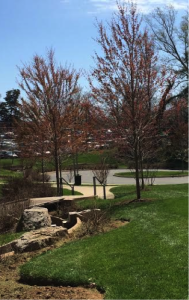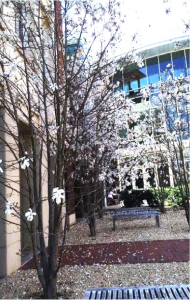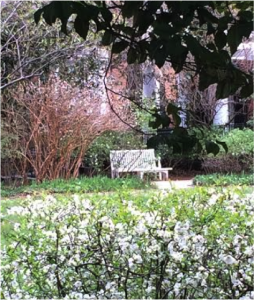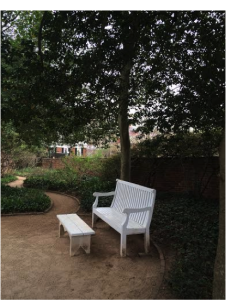Despite the warming weather, many UVA students restrict themselves to studying indoors. This is not a positive health decision. As per the Stress Reduction Theory, derived from a 2013 study conducted by Bratman, Hamilton, and Daily, nature is proven to have a positive effect on ones stress level. Schools and hospitals continue to increase use of windows, in an attempt to foster a stronger connection with students and nature. Many trees across our grounds provide shade and are accompanied by benches and tables, creating an ideal study spot. The reason many students study inside might be due to a lack of knowledge of the prevalence of these study areas, along with the lack of knowledge surrounding the positive benefits that trees can provide to students on grounds.
As a University, we need to increase our awareness of these bountiful locations throughout grounds and take advantage of them. When studying or eating indoors, students do not receive the benefits of trees and nature. Benches and picnic tables under trees provide a relaxed, positive, and resourceful work environment for the aspiring student. A 2011 UVA landscape report refers to some of these locations under the subheading “Refuge + Retreat – Gardens and Courtyards”. 2 However, a shifted perspective to these areas being viewed as more multifunctional and as alternative study areas can greatly help reduce the stress of student and faculty.
When studying, a student will take breaks or get distracted by unrelated things. When studying outdoors, a break period is not an unproductive distraction, but is referred to as soft fascination. Soft fascination consists of the therapeutic and restorative elements found when observing nature. Soft fascination is positive for the body and mind, helping to reduce stress hormones (Rinchen-Wongmo).
A location on grounds that does not receive enough acknowledgment is the spaces surrounding Nau Hall. The environment surrounding this building has multiple sites for studying in sight of, or next to trees. The back patio area does not receive shade coverage from the tree canopy, yet reaps benefits from the many surrounding trees. The student sits in a more controlled outdoor environment and experiences the soft fascination of trees, rustling leaves and insect biodiversity. The same student has the option to move out to a more distant area on the nearby grass, and can potentially study or relax under a tree. The paths surrounding Nau Hall make the scenic route worthwhile, as there is a lot of exposure to trees (picture 1).
Picture 1: Trail around Nau Hall
Picture 2: Area outside Nau Hall
The other side of Nau Hall differs in that there is an area in which both benches and a picnic table are directly immersed by the noninvasive, ornamental trees seen in picture 2. The trees of this area provide shade and create stress-free environment to productively study, eat or relax. Many tables within the building overlook the outdoor area. If you cant be outside, perhaps due to weather, a seat with a view of trees can help to reduce stress through an indirect form of nature.
The many pavilion gardens surrounding the perimeter of the lawn have trees and benches that are not being used to their full potential. These areas put students in a place that is away from their daily stress, allowing them to relax and study in an effort to avoid poor mental health. The negative effects of stress are extreme, and studying or not, we must utilize these areas bountiful with nature to combat the high levels of stress regularly seen in a college setting.
Picture 3: Pavilion VII Garden
Picture 4: Pavilion V Garden
The University can add more benches under the existing tree areas, as a solution to students who avoid sitting on the ground. Tables can also be put into place to replicate a setting of a library; this can help a student using multiple books and accommodate larger groups. By promoting these relaxation regions as alternative study areas, UVA not only promotes a positive image for utilizing the nature around us, but also shows that they encourage students to obtain both academic success and a healthy mind.
Post by Ben Steinberg
Work Cited
Bratman, Gregory, J. Paul Hamilton, and Gretchen C. Daily. “The Impacts of Nature Experience on Human Cognitive Function and Mental Health.” Annals of the New York Academy of Sciences 1249 (2012): n. pag. Web.
Landscape Typologies + Standards. Rep. Office of the Architect, University of Virginia 2011, n.d. Web.
Rinchen-Wongmo, Leslie. “Environment, Meditation, & Soft Fascination.” Threads of Awakening RSS. N.p., 23 June 2009.



